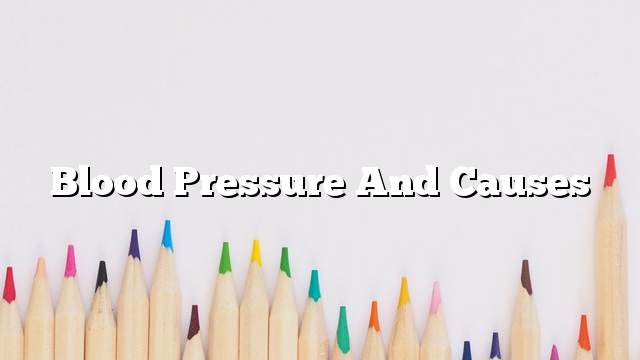Blood pressure disease
The World Health Organization has confirmed that according to periodic studies, about half of the world’s adult population is suffering from arterial hypertension, a chronic disease that accompanies the disease. A lifelong injury can lead to heart attacks, heart failure, and strokes.
Definition of disease
Hypertension Hypertension is the condition of blood in the arteries and veins, which is the pressure caused by increased amounts of blood that press on the walls of blood vessels, especially the arteries, a disease that accompanies the patient without any signs of existence, so it is called silent disease, Is a serious risk to the lives of those infected by being associated with them throughout the life and does not show itself except by the occurrence of complications in the body.
Blood pressure is measured by a pressure device that measures systolic pressure and diastolic pressure, determines the presence or absence of the disease, and the presence of the disease can be diagnosed through laboratory tests such as laboratory analysis of urine and blood to detect the presence of the disease.
Blood pressure
- Systolic pressure: normal reading between 110-120 mm.
- Diastolic pressure: normal reading is between 65-80 mm.
If the blood pressure of 100-140 mm or 60-90 mm is not considered a satisfactory condition.
the reasons
- Deposition of fatty substances on the walls of blood vessels.
- Genetic factor.
- Eat plenty of sodium and salt compounds in your daily diet.
- A defect in the kidney functions leading to accumulation of fluid in the body and high blood pressure.
- Dysfunction of the thyroid gland, especially the thyroid and renal.
- Smoking and drinking heavily.
- Obesity, increased cholesterol.
- Poor mental state, and the accompanying anxiety and tension.
- Congenital defects in the arteries and veins.
Symptoms
There are no general symptoms of the disease except a few signs may indicate its presence such as sudden fainting, headache, dizziness, tinnitus, poor eyesight, redness of the face, and accumulation of fluid in the limbs, especially the feet.
the cure
- Follow a healthy diet pattern away from ingestion of foods containing sodium compounds, preservatives and colored.
- Exercise as much as possible It activates blood circulation and prevents blood pressure imbalance.
- Taking medication for treatment, which lasts for life, and keep away from the causes of the disease mentioned earlier, prevention is better than a quintrance treatment.
